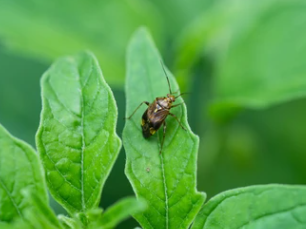Zoology & Plant Science

Creative Biostructure is a forward-looking research institute as well as a leading custom service provider in thefield of microscopy technology. We have launched the iEM Platform, a unique integrated platform for electronmicroscopy (EM) and other microscopy technologies, mainly including scanning electron microscopy (SEM), transmissionelectron microscopy (TEM), and atomic force microscopy (AFM). For plant science research, our preparation method ofplant cells can maximize the maintenance of cell structure and minimize cellular damage and is suitable for studyingstructural and biochemical reactions of plant tissues and cells after treatment or stress. In addition, ourstructural and biochemical analysis using SEM and TEM allows for the detailed description of various insects ofinterest, involving insect glands, sensilla, photoreceptors, wings, and tarsal adhesion organs.
Capabilities at the iEM Platform
- Scanning electron microscopy (SEM)
SEM is a powerful imaging technique in biological sciences, which can lead to a better understanding of nanoscalestructures. As a kind of technology that uses a high-energy electron beam to detect objects at the nano-scalelevel, SEM can generate valuable information about various specimens. SEM can provide valuable information asfollows,
-Topography, texture/surface of a sample.
-Morphology, including shape, size, order of particles in a sample.
-Crystalline structure, such as the arrangement of atoms in a sample.
-Composition, the elemental composition of the sample.
- Transmission electron microscopy (TEM)
TEM allows imaging and chemical analysis with sub-Å resolution and it has been applied used in many differentresearch areas from materials science to life sciences. TEM can provide images and chemical information on thenano- and microstructure of a variety of materials, including soft biological materials. In general, thethickness of the TEM sample is less than 100 nm. Moreover, because the microscope operates under high vacuumconditions, the sample must be dry and also subjected to high-energy electron beams. For this experimentaltechnique, sample preparation is an important part. TEM allows for the highest possible resolution of allimaging techniques, can provide valuable information as follows,
-Morphology, including shape, size, order of particles in a sample.
-Crystalline structure, such as the arrangement of atoms in a sample.
-Composition, the elemental composition of the sample.
- Atomic Force Microscopy (AFM)
AFM enables surface and ultrastructural observation of live cells at nanometer-scale under near-physiologicalconditions, providing force spectroscopy information on the mechanical properties of cells. AFM can be used asan alternative imaging technique to map the topography of a sample, especially for non-conductive samples. SinceAFM works at atmospheric pressure, the technique can provide 3D images even for materials with a low adhesivestrength to the net. AFM can provide valuable information as follows,
-Surface morphology/roughness of a sample.
-Property analysis of a sample, including elastic modulus, loss modulus, hardness.
-Surface changes during or after exposure to liquids, such as biocompatibility.
Service Offering
Plant Science Research- Structural and biochemical analysis of plant tissues and cells.
- Three-dimensional (3D) reconstructions for plant cells and their organelles.
- Structural and biochemical analysis of insects.
- Interaction analysis of insects and plants.
- Structural and biochemical analysis of insects.
- Interaction analysis of insects and plants.

